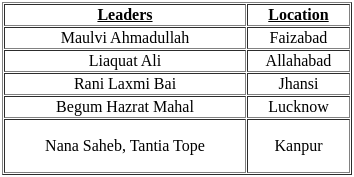History: CUET Mock Test - 9 - CUET MCQ
30 Questions MCQ Test CUET Mock Test Series - History: CUET Mock Test - 9
Al-biruni relied almost exclusively on the works of what?
With reference to the Mughal Administration, consider the following statements:
1. The Mansabdari System was introduced by Mughal emperor Babur.
2. Sawar indicated the number of cavalrymen required to be maintained in service by the Mansabdar.
Which of the statements given above is/are correct?
The leader who participated in the Revolt of 1857 from Bareilly?
With the reference to Ain-i-Akbari, which of the following statement is incorrect?
Give the correct chronological order
1. Nana Sahib denied the claim as Peshwa
2. Heir of Jhansi not recognized
3. Shah Alam was not recognized as Mughal Emperor
Arrange the following major developments in chronological order that led to the formation of the Constitution of India.
(A) Executive was made partly responsible to the provided legislature.
(B) Elections were held under Government of India Act in which Congress won in 8 provinces.
(C) Draft Constitution was introduced.
(D) Promoted Election which led to the creation of the Constituent Assembly.
(E) Jawaharlal Nehru moved Objective Resolution.
Choose the correct answer from the options given below:
What did historians suggest towns derived a significant portion of their wealth from?
How did Bernier view India in relation to the western world?
What were openly sold in markets, like any other commodity, and were regularly exchanged as gifts?
Who was amazed by the efficiency of the postal system?
Who described the coconut as “Nuts like a man’s head”?
Who was the sultan of Delhi at the time, Ibn Battuta?
When was ibn battuta ordered to go to china as Muhammad Bin Tughlaq’s envoy to the Mongol ruler?
Who were a doctor, political philosopher, and historian?
What cleanses the air, and the salt in the sea prevents the water from becoming polluted?
Bernier was drawing an oversimplified picture of what?
What practice did Bernier use to describe the treatment of women?
What city did ibn battuta describe as the largest in India?
The ‘Nalayira Divyaprabandham’ of the Alvars was compared with the
What are two deities that devotees often tended to project as supreme?
|
8 docs|148 tests
|





















